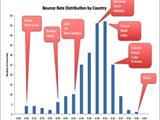How to check how many pages a website has?
A common issue mentioned in SEO work is the number of pages indexed on a website. Many tasks performed by webmasters or SEO professionals are aimed at increasing the indexing volume. A higher proportion of submitted pages being indexed makes it easier for users to find relevant webpages related to the site. Ideally, this proportion would be 100%, but generally, achieving over 60% is considered acceptable.
Page Indexing Rate (Indexing Proportion) = Number of Indexed Pages / Total Number of Website Pages
In the above formula, the number of indexed pages can often be obtained through certain commands or data analysis tools. However, the question remains: **how do you calculate the total number of website pages (i.e., how many pages does the website have)?**
To calculate the total number of website pages, you can consider the following methods:
1. **Site Crawling**: Use crawling tools (such as Screaming Frog or custom scripts) to automatically scan and count all accessible pages on the website.
2. **Sitemap Analysis**: Check the XML sitemap of the website, which usually lists all the important pages that the site owner wants search engines to index.
3. **Database Query**: If you have access to the backend database of the website, query the total number of records in the content tables (e.g., posts, products, etc.).
4. **Estimation Based on Pagination**: For websites with pagination (e.g., e-commerce sites), estimate the total number of pages based on the number of items and items per page.
Each method has its own advantages and limitations, depending on the structure and accessibility of the website.



